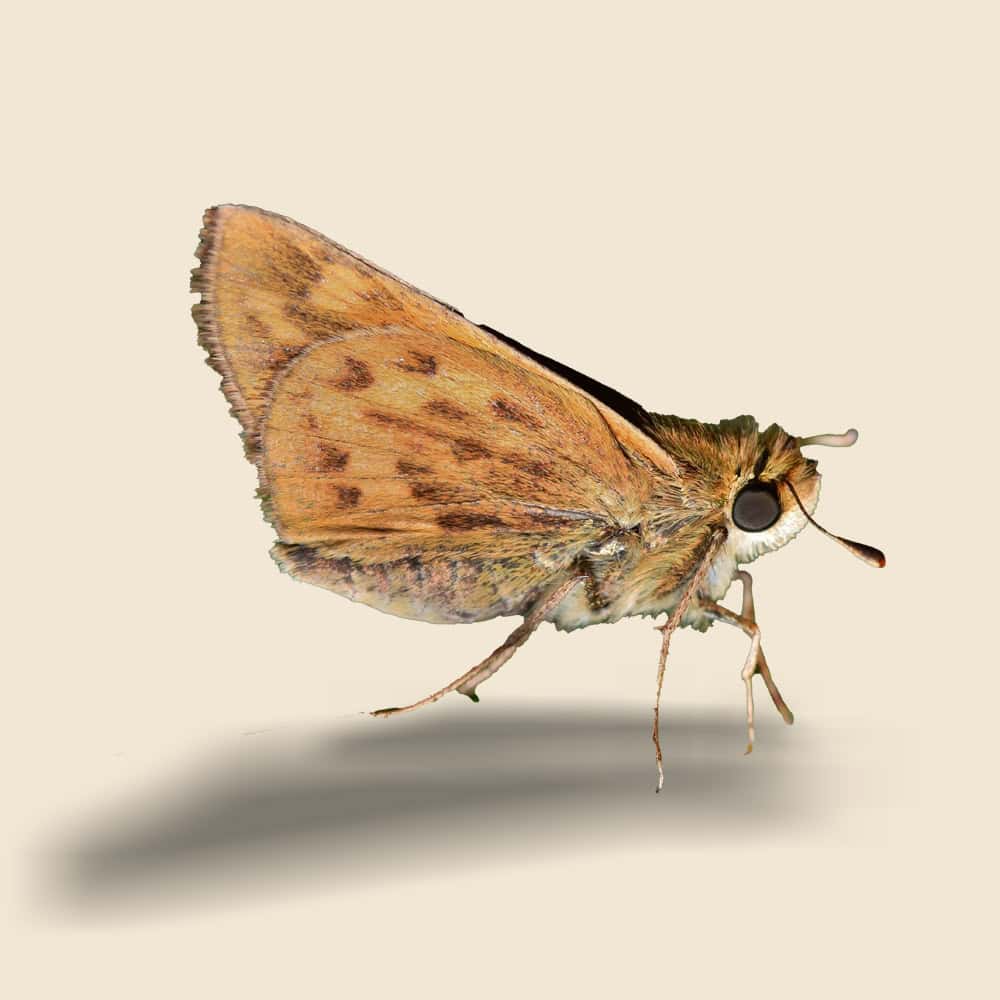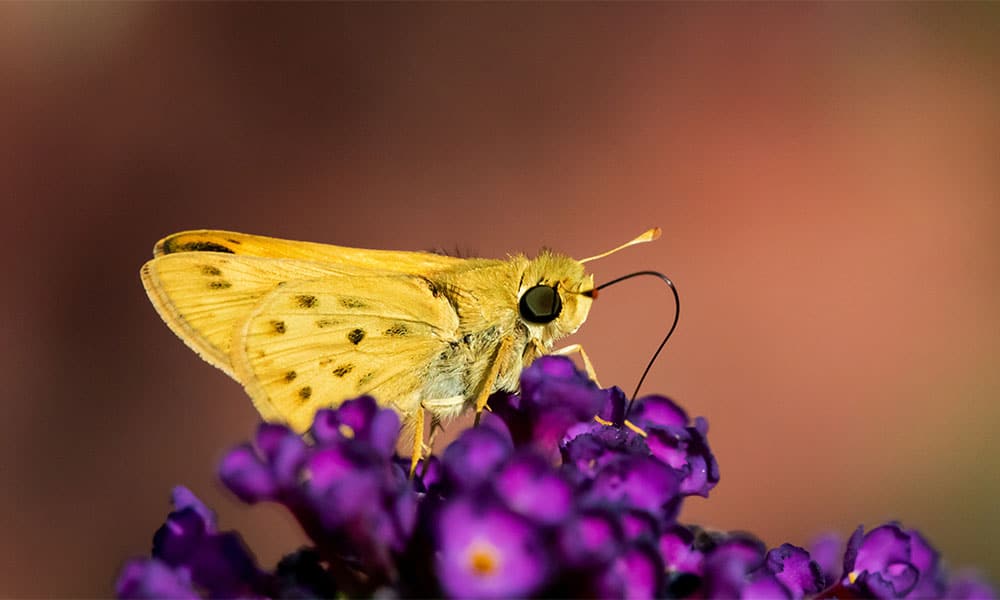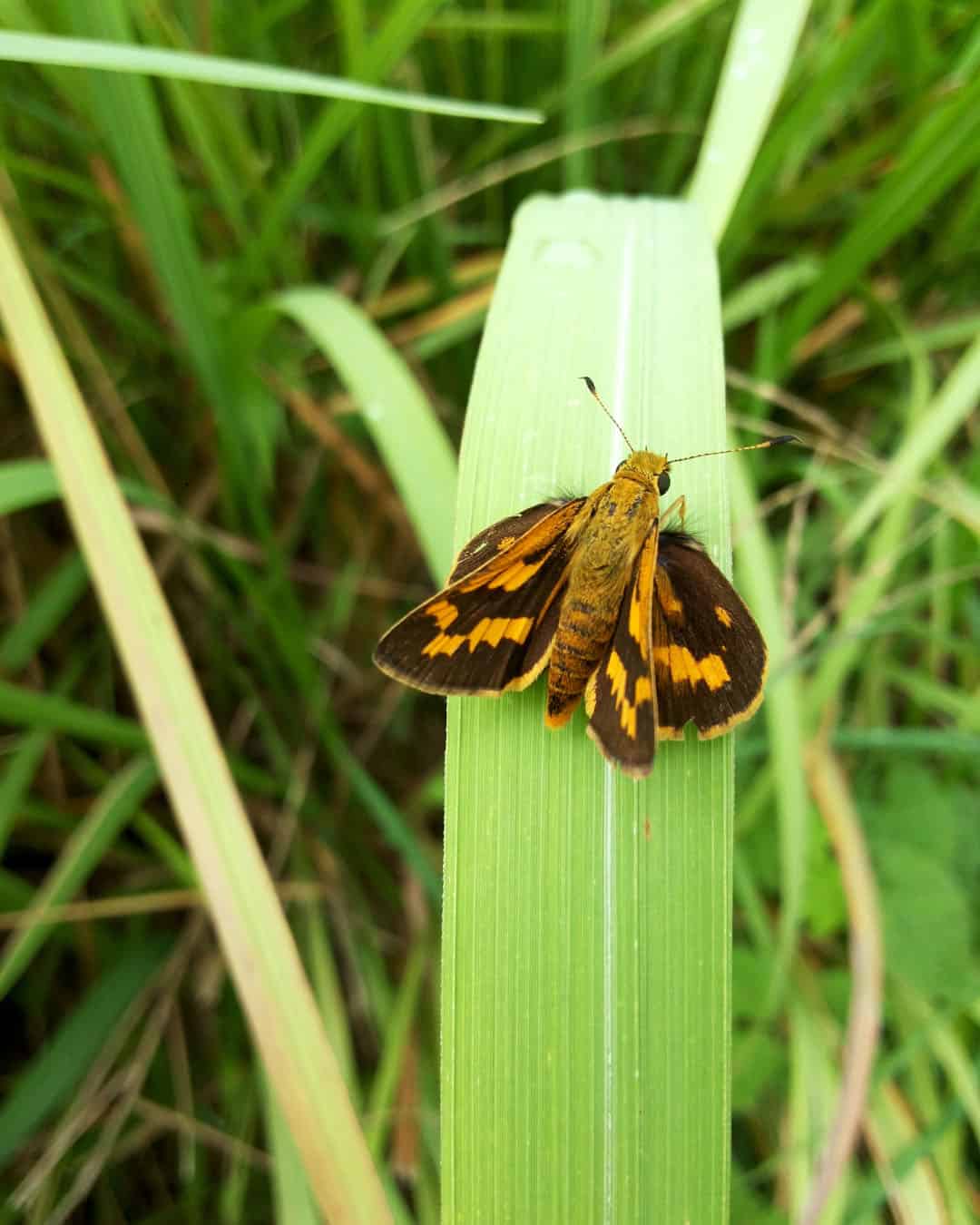Fiery Skipper Facts & Information
Fiery skippers, known for their vibrant orange and brown wings and rapid, darting flight patterns, are a common sight in gardens and lawns. While they are often admired for their beauty, their larvae can cause significant damage to turfgrass, making effective control necessary.

Hylephila phyleus
What You Need To Know About Fiery Skippers
What do fiery skippers look like?
Fiery skippers are small butterflies with a wingspan of about 1 to 1.5 inches. They have bright orange wings with dark brown spots and borders. Their body is stout, and they have a characteristic fast, darting flight pattern.
What do fiery skippers eat?
Adult fiery skippers feed on nectar from a variety of flowers, preferring those with shallow blooms. As caterpillars, they primarily feed on the leaves of grasses, including Bermuda grass and St. Augustine grass.
What sort of habitat do fiery skippers live in?
Fiery skippers are commonly found in gardens, lawns, meadows, and open fields where their host grasses and nectar sources are abundant. They thrive in warm, sunny environments and are often seen basking in the sun.
How do fiery skippers commonly behave?
Fiery skippers are known for their rapid, skipping flight, which makes them appear as if they are “skipping” from flower to flower. They are diurnal and are most active during warm, sunny days. The larvae create shelters by folding or tying grass blades together with silk.
Did you know this about fiery skippers?
Fiery skippers are part of the Hesperiidae family, commonly known as the skipper family, which is named for their quick, skipping flight patterns. Interestingly, fiery skipper caterpillars can sometimes become pests in lawns, particularly in turfgrass, where they feed on the grass blades, causing damage that appears as brown patches. Additionally, despite their small size, fiery skippers can be seen year-round in warmer climates, continuously contributing to pollination.
Understanding Fiery Skipper Infestations
Understanding Fiery Skipper infestations is crucial for maintaining healthy lawns. The larvae, or caterpillars, of fiery skippers, feed on grass blades, creating irregular patches of damaged turf. They are most active during late summer and early fall, and heavy infestations can lead to extensive lawn damage if not promptly addressed.

How Hearts Handles Fiery Skipper Treatment
Hearts Pest Management employs an integrated pest management approach to handle Fiery Skipper infestations. Our process begins with a thorough inspection to determine the extent of the infestation and identify affected areas. We then develop a customized treatment plan that may include eco-friendly options, ensuring the safety of your lawn and the surrounding environment.
Fiery Skipper Inspection
Fiery Skipper Treatment
Fiery Skipper Prevention
Educational Resources

Think You Might Have a Fiery Skipper Infestation?
At Hearts Pest Control, we understand the challenges associated with Fiery Skipper infestations and are here to provide professional solutions tailored to your needs. Flourishing in warm and humid climates, they are prevalent in many regions, including San Diego County, Orange County, and Los Angeles County.